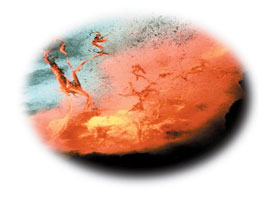This investigation will help you to:
Mechanical properties - 'lithosphere' and 'asthenosphere', The Geological Society of London
This article addresses the differences in terminology between crust and mantle versus lithosphere and asthenosphere.
What on Earth is Plate Tectonics?, USGS
Check out this page that offers brief descriptions about the Earth's interior for beginners and links to more detailed information for those more curious.
Plate Tectonic Animations, USGS
See several different animations of Earth processes. Each animation comes with a short sentence description.
Rocks Form Where Plates Collide, USGS
Find out where igneous, metamorphic, and sedimentary rocks from in a collision zone between oceanic crust and continental crust.
How to Build a Model Illustrating Sea-Floor Spreading and Subduction, USGS
This report describes how to build a model of the outer 300 km (180 miles) of the Earth that can be used to develop a better understanding of the principal features of plate tectonics, including sea-floor spreading, the pattern of magnetic stripes frozen into the sea floor, transform faulting, thrust faulting, subduction, and volcanism.
Birth of the Himalaya, NOVA Online
This site accompanies the NOVA special called Everest and includes some background information on continent-contient collisions.
Geomorphology from Space, NASA
NASA devotes a page to the Himalayan Front and Tibetan Plateau within the online book, Geomorphology from Space - A General Overview of Regional Landforms. The technical descriptions annotate a series of photographs of different parts of the Himalayan range.
The Earth's Crust, USGS
Where is the Earth's crust the thickest? Where is it the thinnest? This map shows the crustal thickness around the globe.

